Ecommerce customer feedback is one of the most untapped ways to improve your ecommerce store this year.
It’s the key that unlocks better online shopping, helps businesses grow, and makes sure customers get a personal touch.
So, how can we get more customers to share their thoughts? We’ll answer this question in this article.
In this guide, we’ll cover:
- Why ecommerce customer feedback is important.
- How to collect customer feedback in your online store.
- Ways to improve the feedback you get from customers.
- How to use this feedback to make improvements to your customer journey.
Next, we’re going to explore why ecommerce customer feedback matters so much.

Why ecommerce customer feedback is important
Even though we’re shopping online, what customers think and feel is still important. Physical stores sometimes ask customers what they think would help them improve. Online stores need to do the same thing.
Understanding this can help businesses grow and improve customer experience. Let’s find out why customer feedback is so important for doing well in online business.
It makes shopping more enjoyable and improves customer satisfaction
One of the best things about ecommerce customer feedback is how it helps make shopping more fun and easy for everyone. Customers can tell businesses what they love, and what’s not working so well.
This can be anything from a tricky checkout process to slow website speeds. By listening to these pointers, businesses can fix the bumps in the road, making shopping a smooth and enjoyable ride.
It helps improve your products
Customers have a knack for knowing what works and what doesn’t when it comes to products. They can spot issues and suggest improvements that might not be obvious to the people selling the item.
Their firsthand experience is like a treasure trove of ideas that can help make products even better, and sometimes even spark the creation of new ones.
It creates loyal customers and improves customer loyalty
There’s something special about feeling heard. When customers see that their feedback leads to real changes, it creates a strong bond with the brand.
They trust that their opinions matter, and this trust encourages them to shop more, leave more positive product reviews, and recommend the brand to others. Feedback is a wonderful tool for turning occasional customers into die-hard fans.
It points the business in the right direction
Feedback is like a compass for businesses. It shows them what their customers want and need, guiding their decisions and plans for the future. It’s like having a direct line into their customers’ thoughts, helping them stay one step ahead.
Whether it’s deciding to launch a new product, sprucing up their website, or tweaking how they talk to customers, feedback helps businesses make smarter choices.
It gives your business a competitive edge
In a sea of online shops, ecommerce customer feedback can be the secret ingredient that helps a business stand out from the crowd.
Understanding what customers really want can make a business shine brighter than its competitors. Listening to and acting on feedback doesn’t just improve what the business offers, but it also shows customers they genuinely care.
And in today’s world, a business that puts its customers first is sure to catch people’s attention.
So now we know the benefits, how can we start collecting this feedback? The next section of this article will dive into a few different methods. Take a look through them all and see which would work for you.

How to collect customer feedback in your online store
Knowing why feedback is so crucial is only half the battle. The next step is figuring out how to gather it. Let’s take a look at some of the most effective ways to collect customer feedback for your online store.
Feedback boxes
Think simple but effective, and you’ve got the concept of feedback boxes. These are easy-to-implement tools that give customers a chance to share their thoughts, and ideally, they should be placed where customers are most likely to have something to share, like the order confirmation page.
But how do you ensure the checkout process is smooth enough to get them to this point? That’s where Flux Checkout for WooCommerce comes into play.
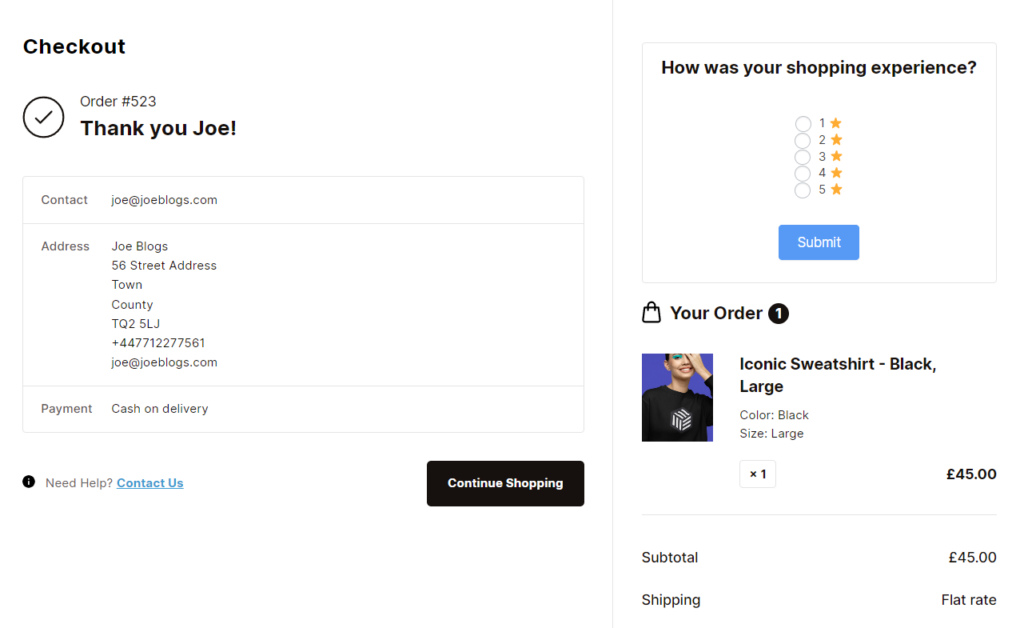
Flux Checkout is designed to turbocharge your checkout process, making it lightning-fast, distraction-free, and, most importantly, reducing checkout abandonment.
It does this by transforming the default WooCommerce checkout into a sleek multi-step checkout that’s designed to increase conversions. This means fewer fields to fill out, no unnecessary clutter like headers, footers, or sidebars, and just an overall easier path to purchase.

By using Flux Checkout, you’ll have a quicker and easier checkout process, reducing any friction that could lead to cart abandonment.
When it comes to gathering feedback from customers, Flux Chckout gives you the ability to add custom content to the order confirmation/thank you page. Which means, adding things like your feedback box, FAQs, and additional information for customers post-purchase is easier than ever.
Flux Checkout for WooCommerce
Prevent abandoned carts with a slick multi-step checkout experience, designed for your customer’s device.
Follow-up emails
Don’t underestimate the power of a well-crafted follow-up email. Once a customer has made a purchase, sending a personalized email asking for their feedback can yield valuable insights.
This kind of email works well when either sent immediately if you want feedback on their buying experience, or further down the line if you want feedback on the product itself.
Either way, it shows you care about their shopping experience and are always striving to improve.
Online review sites
Review sites such as Yelp, Trustpilot, or Google Reviews are go-to resources for many potential customers. Encouraging your customers to leave reviews on these platforms not only provides you with constructive feedback but also boosts your credibility.
If you have a support team dealing with customer reviews, make sure they know to respond to both positive reviews and negative reviews in a professional way. This way, you’ll not only be able to gather important feedback from customers, but improve your reputation management too.
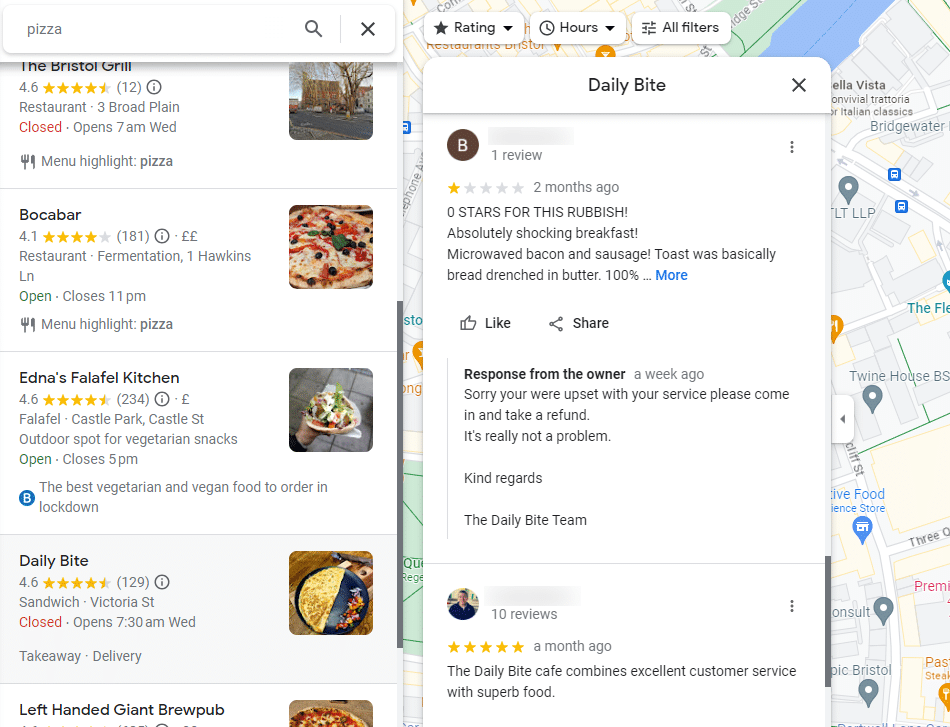
To make the most of this feedback, you can display these reviews on your online store using plugins like WP Business Reviews.
Customer forums
Establishing a space where your customers can interact, like a forum or a community platform such as Discord, is a powerful way to gather feedback.
It not only allows customers to share their experiences with your brand but also fosters a sense of community, making your customers feel more connected and engaged with you.

Depending on the time you have to give, you can host this on existing social media platforms, creating something like a Facebook group. Or you can use your own support and requests forum to manage feedback in a more direct way.
Customer surveys
Customer surveys, particularly pop-up ones (like an exit-intent popup), can be a highly effective method for collecting customer feedback when done right.
Encouraging new customers to interact with these can be a bit of a challenge because it requires slightly more effort on their part. Many ecommerce businesses pair customer survey questions with giveaways and other incentives to boost participation.
When creating a customer feedback survey, you can tailor the questions to focus on specific aspects of your business you want to improve, such as your product range or ecommerce website usability.
Social media
Social media platforms like Facebook, Twitter, and Instagram are not just marketing tools; they are virtual stages for customer feedback.
Encouraging comments, feedback, and interaction on your posts can give you a better understanding of what your customers love about your business and areas where you can improve.

This is perhaps one of the simplest forms of customer feedback that while is pretty hands off, will need collecting and monitoring to make it useful.

Chatbots
Chatbots, especially those powered by artificial intelligence, have emerged as an increasingly valuable tool for businesses looking to collect feedback. They’re not just customer service agents – they are intelligent, proactive collectors of customer opinions.
Chatbots can be programmed to interact with customers at crucial moments during their shopping journey. For example, after they’ve browsed products, added an item to the cart, or completed a purchase. These timely interactions can yield valuable feedback about various aspects of the customer experience, such as website usability, product range, or the checkout process.
Chatbots are available 24/7, meaning they can collect feedback round the clock. This not only provides a constant stream of valuable data but also ensures customers from all time zones are given the opportunity to voice their thoughts.
User testing
When it comes to understanding the user experience of your online store, few methods are as effective as user testing. This process involves having real users interact with your website or product under observational conditions, allowing you to understand their behavior, preferences, and challenges.
During user testing, you can observe how customers navigate your site in real time, what attracts their attention, where they encounter difficulties, and how they react to different user interface elements.
It’s like watching a live stream of your customers’ shopping journeys, with every click and scroll telling you more about what works and what doesn’t.

One common method for user testing is ‘think-aloud’. In this process, users verbalize their thoughts, feelings, and motivations as they interact with your site. This gives you direct insight into their decision-making processes and highlights any areas of confusion or frustration.
Another form of user testing is A/B testing. Here, you present different versions of a webpage to different users and analyze which performs better in engagement, conversion rates, or any other metrics you deem important.
We’ve gone through a selection of ecommerce customer feedback methods and are looking to add them to your ecommerce store. But what if the feedback you collect, just isn’t giving you the information you need.
Let’s next look at a few ways you can improve your ecommerce customer feedback.

Ways to improve the feedback you get from customers
As an ecommerce store owner, one of the most valuable resources you have at your disposal is feedback from your customers. It’s their firsthand experience that can provide the most accurate insights into your store’s performance.
However, the quality of the feedback you receive is just as crucial as the quantity. So, how can you ensure you’re receiving insightful, actionable feedback?
Here are some strategies to help you gather more valuable customer input:
Feedback boxes: ask specific questions
When using tools like Flux Checkout for WooCommerce, you can incorporate feedback forms/boxes into the checkout process.
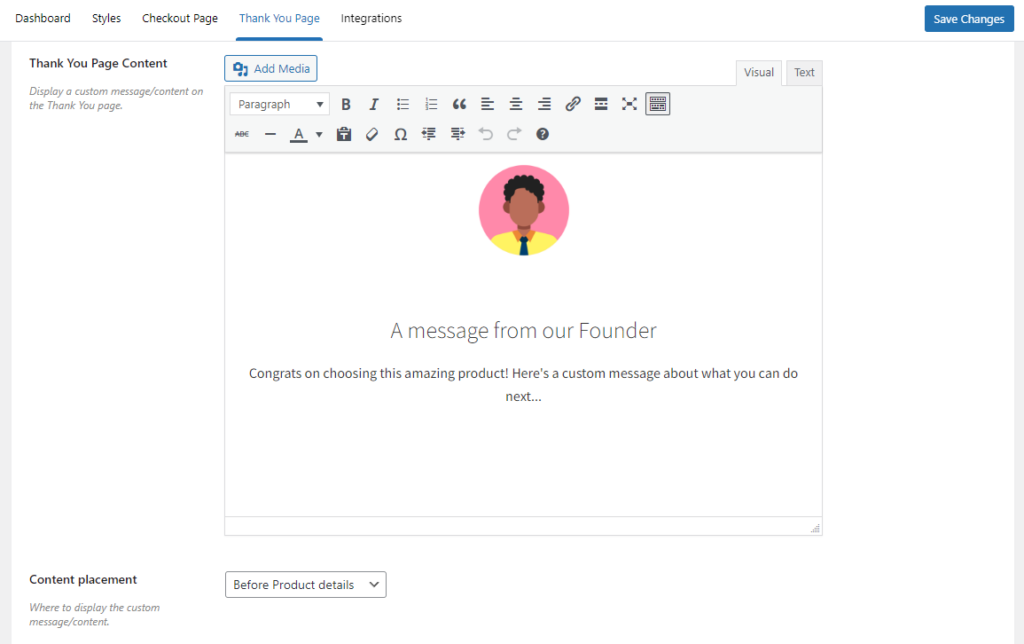
Here, it’s crucial to ask specific, open-ended questions that encourage customers to provide more detailed responses. Instead of asking, “How was your shopping experience?” consider asking, “What did you like about the checkout process?” or “What improvements would you suggest for our checkout process?”
The responses to these questions will provide more actionable insights.
Follow-up emails: timing is everything
When sending follow-up emails, timing is everything. If you want feedback on the customer’s buying experience, send the email immediately after purchase.
However, if you want feedback on the product, wait a few days or weeks to allow the customer time to use the product.
Also, keep the tone of your email conversational and approachable so your customers feel comfortable sharing their honest opinions.
Online review sites: guide your customers
While receiving customer feedback on online review sites such as Yelp, Trustpilot, or Google Reviews is beneficial, the comments can often be varied and sometimes vague.
To get more specific and actionable feedback, consider gently guiding your customers on what to include in their reviews or as follow-up questions to their reviews.
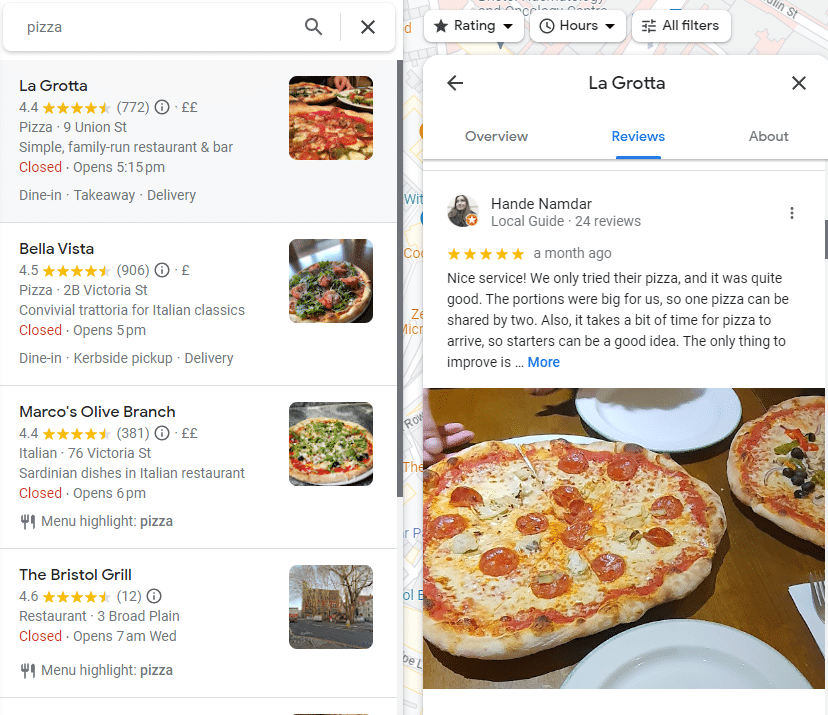
When interacting with customers on these platforms, your customer service representatives can suggest topics for the customers to discuss in their reviews.
Here are a few prompts that can be used to guide the feedback:
- “We’re always looking to improve our product quality. Could you share more about your experience with our product, specifically its durability and functionality?”
- “Our delivery and shipping services are crucial to us. Did you find the delivery of your product to be timely and efficient?”
- “We aim to create an effortless shopping experience. Can you elaborate on how easy (or difficult) it was to navigate our website and find what you were looking for?”
- “We strive for an easy and straightforward checkout process. Could you describe your checkout experience?”
These prompts should, of course, be given as gentle suggestions and not as obligations. We want to ensure that customers feel comfortable and unpressured when leaving their reviews.
By giving your customers some direction, you can encourage more comprehensive and useful feedback that provides insight into specific aspects of your online store.
Active participation in customer forums or on social media platforms, like Facebook or Twitter, can result in a goldmine of customer feedback.
However, it’s not just about listening. You need to facilitate and steer these discussions to areas that provide the most useful insights for your business. It’s like hosting a focus group, but online and available 24/7.
Here are some suggested posts and prompts to get these insightful discussions going:
- Product discussions: Posts that directly ask for feedback on your products are invaluable. For instance, you could say: “We value your input! Tell us what you think of our new [product name]. What features do you like best, and what could we improve?”
- Experience discussions: Ask about the overall shopping experience. For example, “We’re constantly working to make your shopping experience better. What is something you love about shopping with us, and what could we do to make it even better?”
- Website navigation: Get a sense of how customers find your website. “How easy is it to find what you’re looking for on our site? Are there any areas you feel could be more user-friendly?”
- Discussion starters: Posts that don’t directly ask for feedback but start a discussion can be just as valuable. For example, “We’re considering launching a new line of [product type], what are your thoughts?”
These types of prompts are great for fostering discussion, but remember to respond to comments and keep the conversation flowing.
Engaging with customers this way not only gives you a wealth of insights but also demonstrates that you’re an attentive brand that cares about its customers.
Surveys: craft thoughtful questions
Surveys are a powerful tool for collecting specific feedback from your customers. The key is to ask the right questions that not only provide insightful information but also engage your customer, making them more likely to complete the survey.
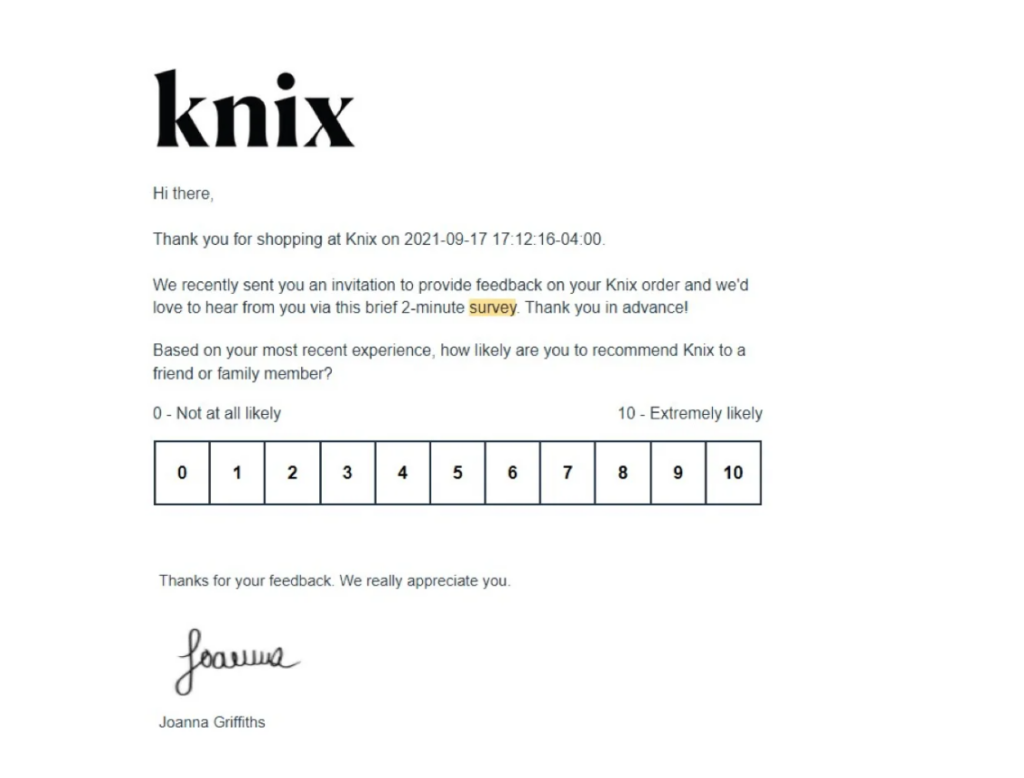
Here are some types of questions you can consider for your surveys:
- Open-ended questions: These questions encourage customers to share their thoughts freely without any pre-determined answers. For example, “What did you like/dislike about your recent purchase from our store?” This type of question can yield very insightful responses, but they might be more time-consuming for customers to answer.
- Scale/rating questions: These questions ask customers to rate their experience on a numerical scale. An example could be, “On a scale of 1-10, how would you rate your overall shopping experience on our site?” They’re quick to answer and provide quantitative data you can easily analyze.
- Comparison questions: These questions ask customers to compare two or more aspects of your business. For example, “Which do you prefer: our live chat support or our email support?”
- Demographic questions: These questions can provide useful data about your customer base, but they should be used sparingly and be optional, respecting customers’ privacy. Questions like “Which age bracket do you belong to?” or “What is your location?” can be helpful to understand your demographic better.
While you might be tempted to ask as many questions as possible, remember that shorter surveys generally have higher completion rates. Try to keep your surveys brief and relevant, focusing on the areas you’re most interested in improving.
User testing: clearly define your goals
When embarking on user testing, it’s crucial to enter the process with clearly defined goals. These objectives will shape the structure of your testing, the questions you ask, and the insights you derive from the respondents’ data.
Here are a few more examples of potential user testing goals:
- Product page effectiveness: Are your product descriptions clear and persuasive? Do users find your images helpful and representative of the product?
- Mobile experience: How does the user experience differ between desktop and mobile? Are there any specific challenges mobile users face?
- Customer service interaction: How easy is it for users to find and use your customer service tools? How satisfied are they with the service they receive?
- Content engagement: Are your blog posts or other content offerings attracting attention? Are users engaging with them in the way you hope?
By having clear, specific goals, you can ensure that your user testing yields actionable insights. You’ll understand exactly what aspects of your online store need tweaking to enhance the overall customer experience.
Just remember, it’s not about trying to find answers to all questions at once. Focus on one or two key objectives at a time to get the most out of your user testing efforts.
So let’s say you’ve gathered some useful ecommerce customer feedback. Now, what do we do with it?

How to use this feedback to make improvements to your customer journey
When it comes to enhancing your ecommerce business, the customer feedback you’ve worked so hard to collect is the golden ticket.
However, merely collecting this feedback isn’t enough. To truly unlock its potential, you need to have the right strategies in place for managing, analyzing, and incorporating this feedback into your business model.
Managing and analyzing customer feedback
Effectively managing and analyzing customer feedback begins with the right tools. Customer Relationship Management (CRM) software is a common tool businesses use for this task. It helps organize feedback from various channels into one centralized location, making it easier to track and monitor.
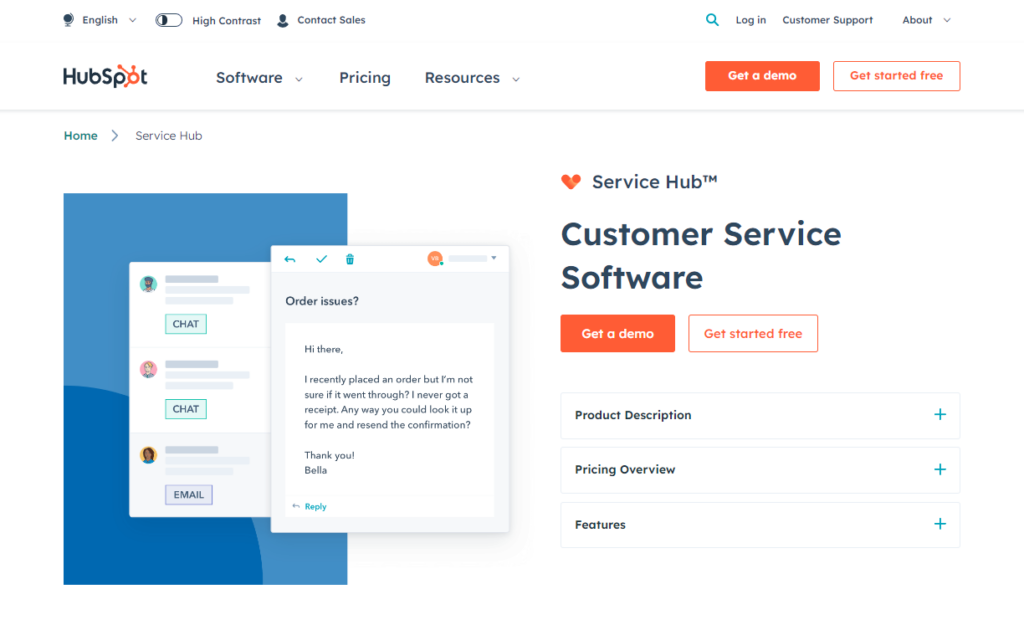
For more detailed analysis, consider using analytics tools that can help quantify the feedback you’ve received. These tools can identify trends, commonalities, and patterns in the data that may not be apparent at first glance. They can also help categorize feedback into different areas of your business, such as product, website design, or customer service.
Once you have an understanding of the most common themes in your feedback, you can prioritize which areas need immediate attention. Always be open and responsive to customer feedback, even when it’s negative. These instances provide an opportunity to fix a problem and turn a dissatisfied customer into a satisfied one.
Incorporating customer feedback into your ecommerce strategy
Customer feedback is a wellspring of insights that can directly inform your ecommerce strategy. Whether it’s shaping the design of your website, fine-tuning your products, or refining your marketing messages, customer feedback can steer your business in the right direction.
For example, if feedback indicates customers are abandoning their shopping carts due to a complicated checkout process, consider simplifying it or using a plugin like Flux Checkout for WooCommerce to improve the user experience.
Flux Checkout for WooCommerce
Prevent abandoned carts with a slick multi-step checkout experience, designed for your customer’s device.
If customers are raving about a particular product feature in their reviews, highlight this feature in your product descriptions and marketing campaigns. On the other hand, consistent negative feedback about a product or service indicates a need for improvement or even discontinuation.
Leveraging feedback to grow your business
Customer feedback is not just about identifying problems; it’s also about leveraging the positive to promote growth.
For instance, positive feedback can be showcased as testimonials on your website or used in your marketing materials, acting as social proof to attract new customers. Positive reviews can also boost your SEO ranking, making your online store more visible to potential customers.
By continually improving your customer experience based on feedback, you increase the likelihood of repeat purchases, foster customer loyalty, and enhance word-of-mouth referrals, all of which can drive business growth.
Remember, your customers are the lifeblood of your business. Listening to their voice and acting on their feedback is the surest way to keep your ecommerce store thriving and growing.
Prioritize ecommerce customer feedback today
The essence of customer feedback is undeniable in enhancing your ecommerce business. It serves to improve shopping experiences, product quality, customer loyalty, and decision-making while providing a competitive advantage.
Tools like feedback boxes, follow-up emails, review sites, forums, surveys, social media, chatbots, and user testing can help gather it effectively. Incorporating solutions like Flux Checkout for WooCommerce can also elevate the feedback quality.
In a nutshell, integrating customer feedback is a crucial step for a thriving ecommerce business.
Flux Checkout for WooCommerce
Prevent abandoned carts with a slick multi-step checkout experience, designed for your customer’s device.

